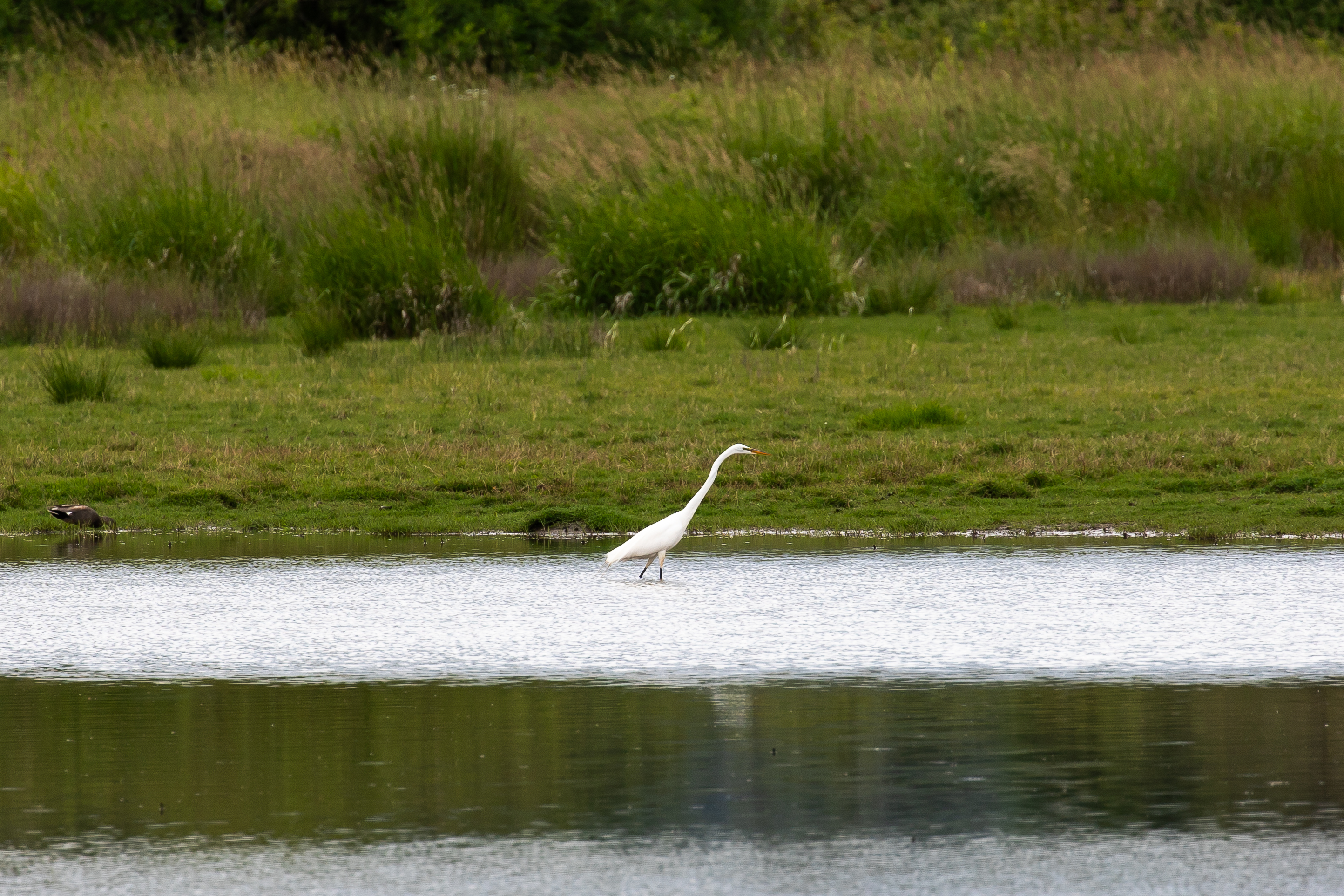Bird Blurbs, Great Egret
 Hello, and welcome to a series of posts I am calling: Bird Blurbs. I’ll give a brief overview of a bird in Oregon in hopes to provide a little bit of context to the natural world by witch we are surrounded. Our first bird is a commoner in the U.S., the Great Egret (Ardea Alba). With a lengthy neck and legs to match, this heron variant can be found in small groups where food is ample (Sibley, 2016) or as a loner in atypical habitat. This particular bird was spotted at the Tualatin River National Wildlife Refuge, a prime example of it’s typical wetland residence.
Hello, and welcome to a series of posts I am calling: Bird Blurbs. I’ll give a brief overview of a bird in Oregon in hopes to provide a little bit of context to the natural world by witch we are surrounded. Our first bird is a commoner in the U.S., the Great Egret (Ardea Alba). With a lengthy neck and legs to match, this heron variant can be found in small groups where food is ample (Sibley, 2016) or as a loner in atypical habitat. This particular bird was spotted at the Tualatin River National Wildlife Refuge, a prime example of it’s typical wetland residence.
A year-round resident in the majority of the Southern hemisphere, the Great Egret migrates to the middle latitudes of the Northern hemisphere during the lade fall and early winter months. When it does migrate, it will do so either as a lone bird or in a smaller group, leaving the flocking behavior to ducks and geese.
The Great Egret will form a monogamous bond during a single mating season, however these bonds may not carry over season to season. They build large, stick based nests on wetland islands or in thicker brush. Typically laying one to twelve eggs over the course of one or two broods, the Great Egret chick is a small, white down covered version of its remarkable parents.
This bird ranks near the top of my personal favorite due to its elegant flight and clean-line body. Thank you for reading what I hope will be the first of many Bird Blurbs
Bibliography
Sibley, D. A. (2016). The Sibley Field Guide to Birds of Western North America Second Edition. Knopf Doubleday Publishing Group Great Egret Life History, All About Birds, Cornell Lab of Ornithology. (n.d.). Www.allaboutbirds.org. https://www.allaboutbirds.org/guide/Great_Egret/lifehistory
